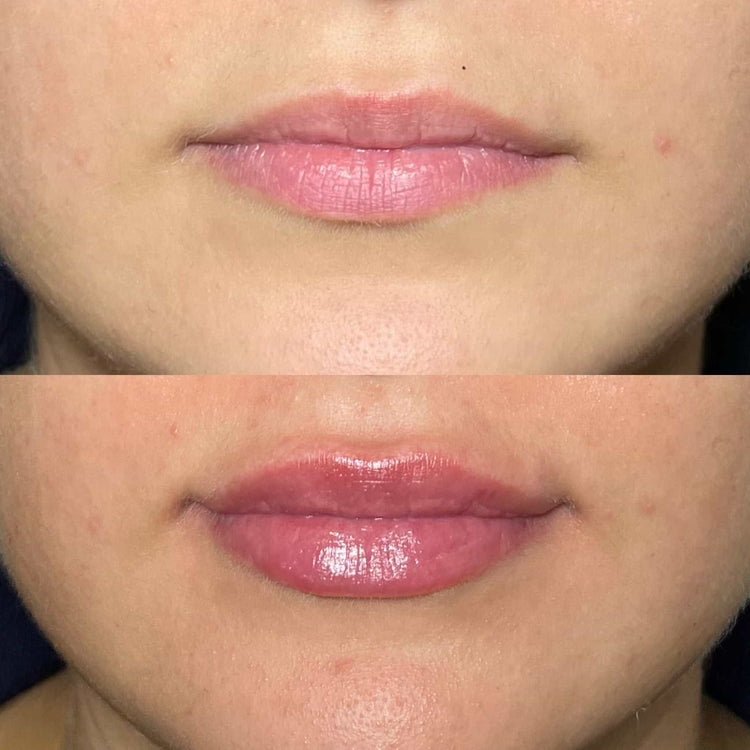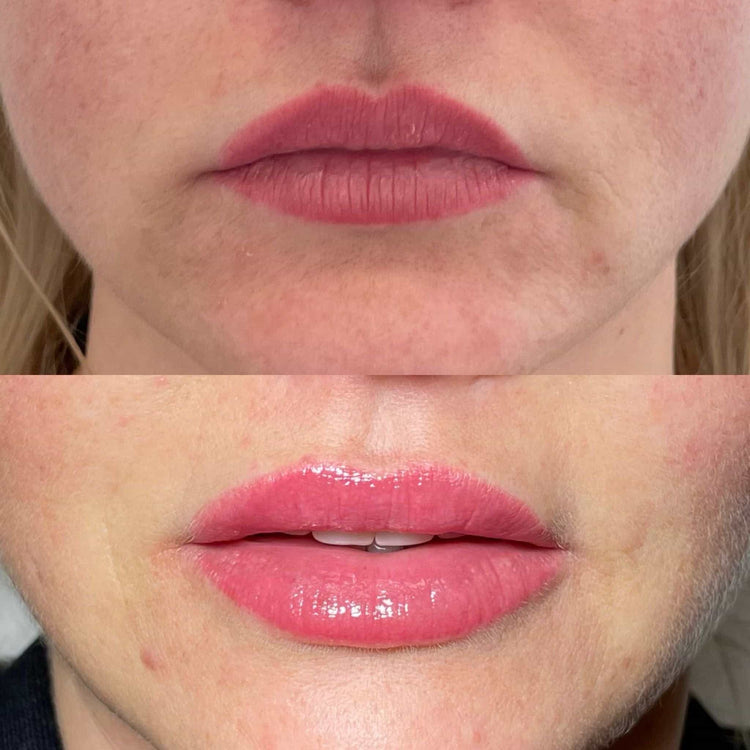Types of Lip Filler
When considering lip fillers, it’s essential to understand the different types available in the UK market. Hyaluronic acid (HA) is the most common type, with varying molecular weights and densities to achieve desired results. Other options include poly-L-lactic acid (PLLA), collagen, and synthetic polymers, each offering unique properties and longevity.
Hyaluronic Acid Fillers
Hyaluronic acid (HA) is the most popular ingredient used in lip fillers due to its natural presence in the body. HA attracts and retains water, plumping the lips and smoothing fine lines. Different HA fillers have varying molecular weights and densities, allowing practitioners to tailor the treatment to individual needs and desired outcomes.
Semi-Permanent Fillers
Semi-permanent fillers offer a longer-lasting solution compared to temporary HA fillers. Poly-L-lactic acid (PLLA) is a popular semi-permanent filler. It stimulates collagen production gradually, leading to a gradual increase in lip volume over several weeks or months. The results of PLLA fillers can last for up to two years.
Reversibility of Lip Fillers
Lip augmentation procedures are becoming increasingly popular, with many individuals seeking fuller, more defined lips. However, it is crucial to understand the nature and longevity of these enhancements. When considering lip fillers, the question of reversibility becomes paramount.
Hyaluronic Acid Fillers
The reversibility of lip fillers depends largely on the type of filler used. Hyaluronic acid (HA) fillers are generally considered reversible.
- HA fillers can be dissolved using an enzyme called hyaluronidase. This effectively breaks down the HA, allowing the body to naturally reabsorb it. The process is typically quick and painless.
Other types of fillers, such as poly-L-lactic acid (PLLA), are not readily reversible. PLLA stimulates collagen production, resulting in a gradual increase in lip volume that lasts for up to two years. Once the filler is metabolized by the body, it cannot be easily reversed.
Semi-Permanent Fillers
When considering lip fillers, it’s crucial to understand the differences between temporary and semi-permanent options and their respective reversibility.
- Hyaluronic acid (HA) fillers are generally reversible.
- They can be dissolved using an enzyme called hyaluronidase.
- This process breaks down the HA, allowing the body to naturally reabsorb it.
Poly-L-lactic acid (PLLA) fillers are semi-permanent and not readily reversible. PLLA stimulates collagen production, gradually increasing lip volume over time. Once metabolized by the body, it cannot be easily reversed.
Factors Affecting Reversibility
The reversibility of lip fillers is a crucial factor to consider when making a decision about this cosmetic procedure. The type of filler used plays a significant role in determining whether or not the results are temporary or permanent. Understanding the characteristics and longevity of different fillers, such as hyaluronic acid (HA) and poly-L-lactic acid (PLLA), is essential for making an informed choice that aligns with individual desires and expectations.
Filler Type and Concentration
The reversibility of lip fillers is a crucial factor to consider when making a decision about this cosmetic procedure. The type of filler used plays a significant role in determining whether or not the results are temporary or permanent.
- Hyaluronic acid (HA) fillers are generally reversible because they can be dissolved using an enzyme called hyaluronidase.
- This process breaks down the HA, allowing the body to naturally reabsorb it.
Other types of fillers, such as poly-L-lactic acid (PLLA), are not readily reversible. PLLA stimulates collagen production, resulting in a gradual increase in lip volume that lasts for up to two years. Once the filler is metabolized by the body, it cannot be easily reversed.
Filler type and concentration also play a role in the longevity of results. Higher concentrations of HA typically last longer, while lower concentrations provide a more subtle enhancement that fades more quickly.
When considering lip fillers, it’s essential to have a thorough consultation with a qualified practitioner to discuss your desired outcomes, concerns, and expectations regarding reversibility.
Location of Injection
The reversibility of lip fillers depends on the type of filler used. Hyaluronic acid (HA) fillers are generally considered reversible because they can be dissolved using an enzyme called hyaluronidase. This process breaks down the HA, allowing the body to naturally reabsorb it.
Other types of fillers, such as poly-L-lactic acid (PLLA), are not readily reversible. PLLA stimulates collagen production, resulting in a gradual increase in lip volume that lasts for up to two years. Once the filler is metabolized by the body, it cannot be easily reversed.
The location of injection also influences the reversibility and longevity of results. For example, injecting filler deeper into the lips tends to result in longer-lasting effects compared to superficial injections.
Individual Body Response
Several factors influence the reversibility of lip fillers. The primary factor is the type of filler used. Hyaluronic acid (HA) fillers are generally reversible because they can be dissolved using an enzyme called hyaluronidase. This process effectively breaks down the HA, allowing the body to naturally reabsorb it.
Other types of fillers, such as poly-L-lactic acid (PLLA), are not readily reversible. PLLA stimulates collagen production, leading to a gradual increase in lip volume that lasts for an extended period—up to two years. Once metabolized by the body, it cannot be easily reversed.
The concentration of the filler also plays a role in its longevity. Higher concentrations of HA typically last longer than lower concentrations. The location of injection can also affect reversibility and longevity. Injecting filler deeper into the lips often results in longer-lasting effects compared to superficial injections.
Individual body responses to fillers can vary. Factors such as metabolism, skin elasticity, and overall health can influence how long fillers last and how well they are metabolized by the body.
Dissolving Lip Fillers
When considering lip augmentation, it’s crucial to understand the different types of fillers available and their reversibility.
Procedure Involved
Dissolving lip fillers typically involves injecting an enzyme called hyaluronidase. Hyaluronidase breaks down hyaluronic acid (HA), a common ingredient in temporary lip fillers. This process allows the body to naturally reabsorb the filler, reversing the augmentation effect.
The procedure is generally quick and relatively painless. The amount of hyaluronidase used depends on the volume and location of the filler being dissolved.
It’s important to note that not all lip fillers are reversible. Fillers containing poly-L-lactic acid (PLLA), for example, stimulate collagen production and are not readily dissolvable.
If you’re considering dissolving your lip fillers, it’s essential to consult with a qualified medical professional who can assess your individual situation and provide appropriate guidance.
Duration and Recovery Time

Dissolving lip fillers depends on the type of filler used. Hyaluronic acid (HA) fillers are generally reversible because they can be dissolved using an enzyme called hyaluronidase. This process breaks down HA, allowing the body to naturally reabsorb it.
Other types of fillers, such as poly-L-lactic acid (PLLA), are not readily reversible. PLLA stimulates collagen production, leading to a gradual increase in lip volume that lasts for up to two years. Once metabolized by the body, it cannot be easily reversed.

Recovery time after dissolving HA fillers is typically minimal. There may be some mild swelling or redness at the injection site, but these symptoms usually subside within a few days.
The duration of results for lip fillers varies depending on the type and concentration of filler used. Temporary HA fillers can last anywhere from a few months to up to a year, while semi-permanent options like PLLA can provide results for up to two years.
Potential Risks and Side Effects
Dissolving lip fillers is a procedure that can reverse the effects of temporary lip augmentation. This process is typically used when individuals are unhappy with the results of their filler or desire to change their lip shape.
Hyaluronic acid (HA) fillers, the most common type used in lip augmentation, are reversible because they can be broken down by an enzyme called hyaluronidase. Hyaluronidase is injected into the treated area, effectively dissolving the HA filler and allowing the body to naturally reabsorb it.
Other types of fillers, such as poly-L-lactic acid (PLLA), are not readily reversible. PLLA stimulates collagen production, leading to a gradual increase in lip volume that lasts for several months or years. Once metabolized by the body, it cannot be easily dissolved.
Potential risks and side effects associated with dissolving lip fillers can include bruising, swelling, redness, and temporary discomfort at the injection site. In rare cases, more serious complications like infection or allergic reactions may occur.
It is essential to consult with a qualified medical professional who has experience in administering both lip fillers and hyaluronidase injections. They will assess your individual situation, discuss potential risks and benefits, and determine if dissolving your lip fillers is the appropriate course of action for you.
Alternatives to Lip Filler Dissolution
While hyaluronic acid (HA) fillers offer a temporary solution that can be reversed, other types like poly-L-lactic acid (PLLA) are semi-permanent and not easily reversible. Understanding these differences is crucial when considering lip augmentation.
Natural Remedies
In the UK, understanding natural remedies for reversing lip filler effects is important, but it’s crucial to remember that these methods often have limited efficacy compared to professional treatments like hyaluronidase.
- Aloe Vera Gel: Known for its soothing properties, aloe vera gel may help reduce inflammation and swelling associated with fillers.
- Arnica Montana: This homeopathic remedy is often used to minimize bruising and swelling, potentially aiding in the appearance of filler absorption.
- Essential Oils (with caution): Some essential oils like rosemary or grapefruit are believed by some to promote lymphatic drainage, which may help the body process fillers. However, always dilute these oils properly and perform a patch test before topical application near treated areas.
It is essential to consult with a qualified medical professional for safe and effective lip filler dissolution or modification. Natural remedies should not be considered a substitute for professional treatment.
Alternative Cosmetic Treatments
Alternatives to dissolving hyaluronic acid (HA) fillers include non-invasive approaches that aim to minimize their appearance over time. While these methods generally work best when combined with the gradual metabolism of the filler by the body, they can help manage fullness or reshape lips temporarily.
One option is using microneedling. This technique involves using tiny needles to create controlled punctures in the skin, stimulating collagen production and promoting cell turnover. While it won’t dissolve HA fillers directly, microneedling can improve the texture and appearance of the lips, potentially making the filler look less prominent.
Another approach is utilizing facial exercises specifically designed for lip enhancement. These exercises may help to strengthen the muscles around the mouth and encourage collagen production, subtly modifying the shape and fullness of the lips over time.
Consider these alternative cosmetic treatments:
- Botox: Botox injections can be used to soften lip lines or reduce vertical wrinkles around the mouth, enhancing the appearance of the overall lip area without adding volume.
- Chemical Peels:** Chemical peels exfoliate the skin and promote cell turnover, potentially reducing the appearance of superficial filler irregularities. They can improve texture and pigmentation, contributing to a smoother lip contour.
Long-Term Considerations
When making decisions about cosmetic enhancements like lip fillers, it’s important to think about the long-term consequences.
Understanding how different types of fillers work, their longevity, and reversibility is crucial. This knowledge empowers you to make informed choices aligned with your desired outcomes and anticipate potential future adjustments.
Persistence of Results
Long-term considerations regarding lip fillers encompass understanding their permanence, potential for revision, and evolving aesthetic preferences. Fillers like hyaluronic acid (HA) are reversible, allowing for modification or removal if desired. However, semi-permanent options such as poly-L-lactic acid (PLLA) offer longer-lasting results that may require different approaches to alter their effects.
It’s crucial to remember that individual responses to fillers vary, and factors like metabolism, skin elasticity, and filler location influence longevity. As time passes, natural aging processes will continue, potentially requiring further treatments or adjustments to maintain desired lip aesthetics. Open communication with a qualified practitioner about long-term goals and expectations is essential for achieving satisfactory and sustainable results.
Future Treatment Options
Long-term considerations are crucial when it comes to lip fillers. The longevity of different types of fillers varies significantly. Hyaluronic acid (HA) fillers, the most common type, are temporary, lasting anywhere from a few months to a year depending on the concentration and individual factors. On the other hand, semi-permanent options like poly-L-lactic acid (PLLA) can provide results for up to two years.
As time passes, natural aging processes will inevitably affect the appearance of your lips, regardless of whether you have had fillers. Skin elasticity decreases, collagen production slows down, and volume loss occurs naturally. This means that even with semi-permanent fillers, touch-up treatments may be necessary to maintain desired fullness and shape.
It’s important to discuss long-term goals and expectations with a qualified practitioner during your consultation. They can help you determine the most suitable type of filler for your needs and provide guidance on potential future adjustments as your lips age and evolve.
Remember, lip fillers are not a permanent solution. Being aware of the long-term implications and actively managing them through informed decisions and follow-up treatments will contribute to achieving lasting satisfaction with your aesthetic results.
- Non Surgical Butt Lift In Shepperton Surrey - May 16, 2025
- Jalupro Super Hydro Skin Booster Treatments Near Selhurst, Surrey - May 15, 2025
- Baby Botox Treatments Near Ham, Surrey - May 15, 2025

